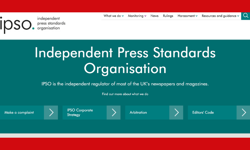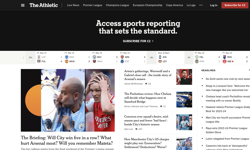With 240 titles published in almost 60 countries worldwide, and with a total circulation of 44 million copies a day, free daily newspapers have proven to be more than a passing phenomenon. In terms of circulation and readership, free dailies are indeed a ‘success’. In terms of revenues and profits, however, the picture looks rather different. A quarter of the 320 free dailies that have been launched so far have already closed down. Metro International, the largest publisher of free dailies, only made a profit in 2006. In Spain, three of the four national titles are losing money. In the London evening market, two free papers are engaged in a vicious battle leading to losses for both. In Denmark, the number of free dailies dropped from eleven in 2006 to four in 2008, three of them losing money. This begs the question whether free dailies are the reinvention of the newspaper which can bring new readers and revenues to the industry, or just a bubble about to burst.
Launch of Metro
When Metro was launched in February 1995 in Stockholm, the business model was rather simple. Save costs on distribution and subscription, concentrate on material from press agencies, employ a small staff and hand out a tabloid to people with free time on their hands: commuters. With lower rates than paid papers but with a high circulation and an attractive demographic, the new Metro made money within a year. This success-story soon came to an end. Operations in the UK, Argentina, Switzerland and Poland were closed, while the Czech and the Finnish editions were sold. Other publishers had similar experiences; while Metro UK (Associated Newspapers) and the Swiss 20 Minuten (Tamedia) proved to be successful within a few years, most publishers were less lucky. In 2008, probably 70% of the remaining 240 titles are losing money – the exact number is not certain as most publishers do not break out separate data for all publications. The main reason, however, is that the majority of these titles launched only in the last few years, and don’t expect to make money yet.
Total circulation of free dailies has increased every year since 1995 – with an average growth rate of 60% (see table below). But this growth was in no way linear. In both 1999 and 2000, circulation increased by more than 250% but the recession of 2001 slowed down growth to 33% and to 13% in 2003. After that, growth picked up again, to almost 50% in 2006. Between 2004 and 2006 circulation doubled from 18 to 36 million. In 2007, the growth rate dropped to 16% while in the first six months of 2008 circulation increased by no more than 6%.
| - | 1995 | 1996 | 1997 | 1998 | 1999 | 2000 | 2001 |
| Countries | 2 | 2 | 4 | 6 | 13 | 24 | 29 |
| Titles | 2 | 2 | 5 | 7 | 30 | 64 | 82 |
| Circulation (,000) | 231 | 249 | 558 | 918 | 2891 | 7566 | 10043 |
| - | 2002 | 2003 | 2004 | 2005 | 2006 | 2007 | 2008 |
| Countries | 32 | 32 | 37 | 43 | 51 | 56 | 58 |
| Titles | 85 | 99 | 127 | 161 | 225 | 247 | 238 |
| Circulation (,000) | 12596 | 14674 | 18073 | 24634 | 35861 | 41511 | 44014 |
Newspapers, and free dailies in particular, are vulnerable to economic changes because of their dependence on recruitment and consumer goods advertising. This does not mean that the free newspaper model is problematic per se, but it does mean that the stand-alone free newspaper will find it difficult to survive a recession as the publisher will have no other sources of income. With launching costs being between €5 and €20 million and an expected break-even point of three to seven years (with the latter more likely than the former), publishers need very deep pockets to keep the presses going.
Saturation point?
The second point the table illustrates is that total circulation seems to be reaching a saturation point. With a 6% growth in the first six months of 2008, an all-time low in circulation growth has been reached. A more detailed investigation of some mature markets confirms this view. The Danish example has been mentioned before: from eleven to four titles in two years while circulation dropped by more than 30% in this period. But also in Sweden, the Czech Republic, Spain and Italy, titles folded and circulation went down. Not all markets, however, follow this pattern. In the UK, the Netherlands, Hong Kong, and Iceland, free circulation has shown a steady growth for at least five years.
Three models of free newspaper seem to be the most difficult to sustain: afternoon papers, sports papers and home-delivered papers. Afternoon papers suffer from distribution problems, readers are more tired and probably have read news online during the day, while they also compete with morning papers that are still lying around. In Sweden, Germany, Spain, Italy, the Netherlands, Denmark, Switzerland, Chile, and Singapore, free afternoon dailies closed down. In fact, almost half of the afternoon papers have closed down so far, while in total, 25% of free dailies launched stopped publication. In France, Croatia, Switzerland, the UK, the Ukraine, Argentina, Chile, Australia, Israel and Korea, free afternoon papers are still published.
Sports newspapers have problems attracting advertisers. While there are many men interested in sports, not many advertisers seem to be interested in these men, and when they are interested they use their budget for sponsoring. Sports papers in Spain, Italy, Germany and Portugal folded, mostly within one year.
Home-delivery of free newspapers on a substantial scale was first used in Iceland, lack of public transport being the obvious reason. The model was later introduced in Denmark, the US, the Czech Republic, the Netherlands and Switzerland. In Denmark, one of the papers using that method (Dato) closed down, while the others (24timer, Nyhedsavisen) cut down on home-delivery. Also the Czech paper closed, while the Examiner (US), .CH (Switzerland) and De Pers (the Netherlands) all reduced home-delivery. The costs of the model were approaching that of delivering paid newspapers, while it resulted in a low number of readers per copy; Free dailies handed out in public transport can have two to four readers per copy, home-delivered newspapers may have less than one reader.
Victims of own success
The biggest problem for free newspapers, however, does not concern recessions and saturated markets but their own ‘success’. The table shows growth, not only in circulation but also in countries with free newspapers and in titles being launched. For the first four years (1995-1998), the number of titles was equal to the number of countries, monopolies in every market. In 1999, there were 27 titles in 13 countries, growing to 96 in 32 countries in 2003 and 200 titles in 50 countries in 2006. As most free dailies are published only in major metropolitan markets, competition has increased dramatically. In the Korean capital Seoul, eight titles compete, in Italy five titles are available in most major markets, in Spain, Portugal, the Netherlands, Switzerland, France and Denmark four titles compete. Even in small countries like Iceland, Andorra, Macedonia and Luxemburg, free dailies compete. A free-daily-monopoly is in fact quite rare. The result seems to be quite devastating. Advertisers love competition and use it to put pressure on papers by asking for higher discounts. In countries like Sweden, Spain, Italy, the Netherlands and Denmark, discounts up to 90% are reported.
Although one or two free dailies in a market can make money, four or more titles will spoil the market in such a way that everybody is suffering, including paid papers. In theory, nobody will launch a free daily when the chances of profits are minimal. In real life, this might be somewhat different. There are quite a few free papers that were mainly launched as spoilers to protect the market of incumbent publishers. In Denmark, both leading publishers immediately launched their free home-delivered spoilers when an Icelandic publisher announced their plans for such a paper. In Germany, leading publisher Axel Springer (Bild Zeitung) launched a spoiler in 1999 against Schibsted and threatened to do that again against any new attempt. Also in France, the Netherlands, Chile, the USA, Italy and Switzerland, spoilers were launched.
The London slugfest
The launch of Metro UK (Associated Newspapers) was a deliberate attempt to prevent Metro International launching in London. When this did not happen, Associated found itself with a paper that made money without hurting their flagship, the Daily Mail. When they recovered from the surprise, the publisher decided to keep Metro in the market, and protect their new brand against competitors. So, when Murdoch wanted to start his own free paper, Associated reacted first by launching Standard Lite, changing that later to London Lite. This didn’t prevent Murdoch from starting thelondonpaper, with the result that both evening papers are losing money now, as is paid competitor the Evening Standard.
Conclusion
With a quarter of all free papers launched so far closed down, and with an estimated 70% of the remaining titles still in the red, the business model may seem very problematic. But we have to keep in mind that of those remaining titles, more than half were launched in 2004 or later, and, because most publishers don’t expect to make money in the first years, the number of non-profitable free dailies actually is not surprisingly high. Moreover, with paid papers losing ground in almost every Western market, and the demographic profile of the growing amount of non-readers still being very attractive to advertisers, the model seems to have real chances. A growing amount of advertising money is directed online while television is still the major advertising medium in many countries. Both media, however, seem to suffer from fragmentation. Print, and newspapers in particular, can deliver a substantial and attentive audience within a fixed time span, something online is hardly capable of.










